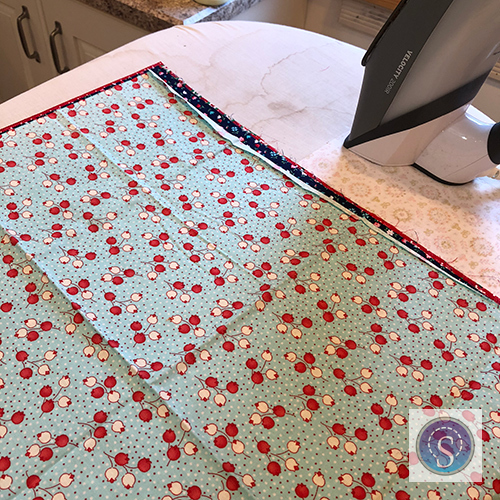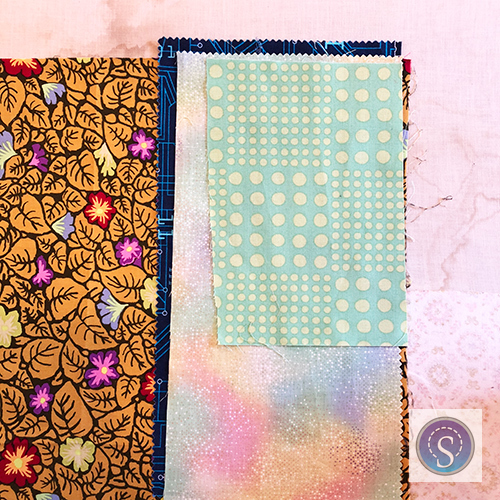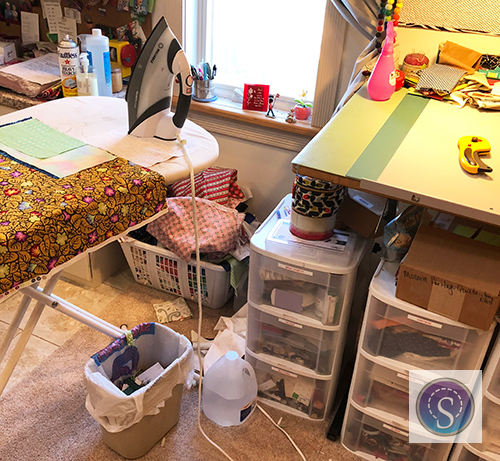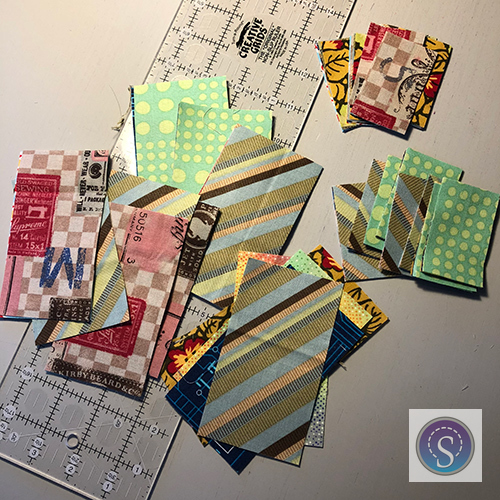Most of us would love to get through the cutting quickly, so we can move on to the sewing. I have some strategies for cutting because I don’t enjoy it much.

Twinkle uses many shades of green from my fabric stash.
I make mostly scrap quilts—not necessarily quilts cut from a scrap basket, but quilts that have many, many fabrics. Instead of six fabrics, I’ll use 60, or sometimes 600.
So the cutting is as much an undertaking as the piecing and quilting. It can take forever. This is my method for cutting patches from a variety of fabrics when you’re making a scrap quilt.

If the fabric pieces are fairly similar in shape and size, I line up top and right-hand edges on the ironing board as shown above and press.

If the pieces are different shapes and sizes, then I put the largest piece on the bottom, and work my way up with smaller and smaller pieces. Putting the largest pieces toward the bottom gives you visibility as you continue adding layers of fabric.

I place the top and right-hand edges so that when I cut, I’m slicing through the most advantageous place on every piece. I only want to make one cut through all of the fabrics to get started. That cut will need to remove uneven edges, selvages, pinked edges, and so on. As you position each piece, place it so that just one cut through all the layers will remove everything you don’t want.
After arranging and pressing, I move the pile to my cutting table, which is very near my ironing board. The ironing and cutting surfaces are set up in an L shape, below.

You can see that it’s a short move from the ironing board to the cutting table, just two or three feet, so the layers stay put when I move them.

Now I’m ready to make that all-important first cut. You can see why it was important to place the fabric edges strategically. With one cut, we’ll have a perfectly straight edge on all of the fabrics.

When I cut my first strips, I pull them down and away, and continue cutting across the fabrics. As I get to the end of the top fabrics, I can continue cutting across the bottom layers if I need to.
I might do this several times with different fabrics each time, until I have a lot of strip piles that I need to sub-cut.

In order to sub-cut, I place the layers of strips right next to each other with the raw edges touching as shown above. Then I cut across all of them at once. I stop and true up as needed.

In a matter of minutes, I have dozens of patches cut from a variety of fabrics.
In case you missed it, read Part 1 of this post.
Coming in Part 3: One more strategy for cutting scraps.

Great cutting tips part one and two…looking forward to part 3